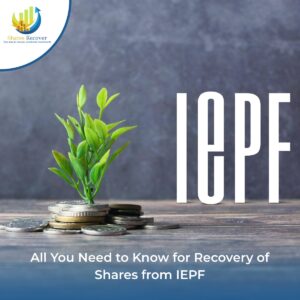Unclaimed dividends are consumed in financial darkness, unnoticed by both the investors and the corporations themselves. However, it is against this background that a key protector, the Indian government’s Investor Education and Protection Fund (IEPF), steps in to protect these hitherto neglected funds and channel them into more meaningful purposes. This handbook ushers through the intricacies of unclaimed dividends transfer to IEPF, providing a sense of the process’s importance, technicalities, and most aspects. This investigation allows us to reveal a fundamental purpose of IEPF, which is the protection of investors’ interests and the utilization of the dividends, which are not usable anyway as they are idle for other issues. Let us explore this informative trip to the world of unclaimed dividends and the evolutionary changes brought about by IEPF.
Understanding Unclaimed Dividends
There are unclaimed dividends that are included as declared dividend amounts that the companies are not able to distribute to the shareholders due to a number of reasons. This financial neglect is caused by several factors, such as inaccurate mailing addresses, suspended communication services, or shareholders simply forgetting to collect their dividends. This incident, on the other hand, acts as a reminder that there are challenges in ensuring smooth dividend disbursement and suggests the need for mechanisms such as the Investor Education and Protection Fund (IEPF) to address such lapses, protect shareholder interests, and simplify the recovery process for unclaimed dividends.
The Role of IEPF
The Investor Education and Protection Fund (IEPF) was formed as a result of the Companies Act of 2013 in order to safeguard the rights of investors. One of its important roles is to receive unclaimed dividends and ensure they are used for the benefit of investors and the entire economic system.
Mechanism of Unclaimed Dividend Transfers
The transfer of dividends that were held for too long by companies is mandatory as defined by regulatory rules, and the account is typically transferred to the Investor Education and Protection Fund (IEPF). The process starts with unclaimed dividends as the companies carefully register the dividends that are outstanding. Later, formal warnings are sent to shareholders, informing them about their forthcoming payments and encouraging them to make claims. However, if no appropriate response or claim is forthcoming at this stipulated time, the unclaimed dividend amount is then deposited into the designated IEPF account. This approach is systemic, which means that it is in agreement with good standards and provides a safe means of transferring unclaimed dividends to the IEPF.
Benefits of IEPF Transfers
The benefits of unclaimed dividends transfer to IEPF are multifaceted and pivotal for the financial ecosystem in the following ways:
- Investor Protection: IEPF transfers act as a security blanket for shareholders that make sure of their legal right to have claims over their shares. To ensure that the investors’ rights to dividends remain intact, unclaimed dividends are placed into the hands of the government in the form of a lender or guardian.
- Financial Inclusion: A critical role that the IEPF portrays is through the consolidation or unclaimed dividends that lead to financial inclusion. These funds support activities that support the expansion of financial services, leading to the development of the capital market and a more inclusive financial market.
- Corporate Governance: The arbitration of transferring unclaimed dividends to the IEPF helps in ensuring a form of transparency and accountability in most corporate entities. It underlines the desire to promote ethical practices in which unclaimed funds are properly looked after and utilized to credit the interests of the investor and society at large. This helps in the improvement of the standards of corporate governance in general.
Key Stakeholders Involved
The successful execution of unclaimed dividend transfers involves active participation from key stakeholders:
- Shareholders: It is the responsibility of the shareholders to ensure they supply their current contact details to the company registrar to avoid unclaimed dividends.
- Companies: The companies need to identify unclaimed dividends, deliver the announcement to shareholders, and provide the necessary procedures to complete the transfer within the regulations.
- IEPF Authority: The IEPF authority is in charge of handling all unclaimed dividends that have been transferred to the authority’s accounts.
Legal Framework and Compliance
The transfer of unclaimed dividends is under the purview of the Companies Act, 2013 and the related rules of IEPF. Regulatory bodies establish strict timelines, schedules, and procedures to be followed by firms in order to ensure compliance and evade penalties.
Utilization of Unclaimed Dividends
Under the IEPF, unclaimed dividends are being used for various investor-friendly programmes, such as investor education programmes, awareness campaigns, and protection for investor rights. Moreover, such funds can also be applied to activities that relate to corporate social responsibility (CSR) for the benefit of society.
Final Thoughts
The unclaimed dividend transfer to IEPF serves as the basis for investor protection and corporate governance in the Indian financial world. A deep insight into the complexities behind these transfers enables stakeholders to participate in the strengthening of transparency, accountability, and enhanced investor confidence in capital markets. In this landscape, Shares Recover contributes by being committed to working on the recovery process. While the IEPF assumes the role of a guardian of unclaimed dividends, it directs these funds into projects that not only protect the interests of investors but also provide benefits to society as a whole.




